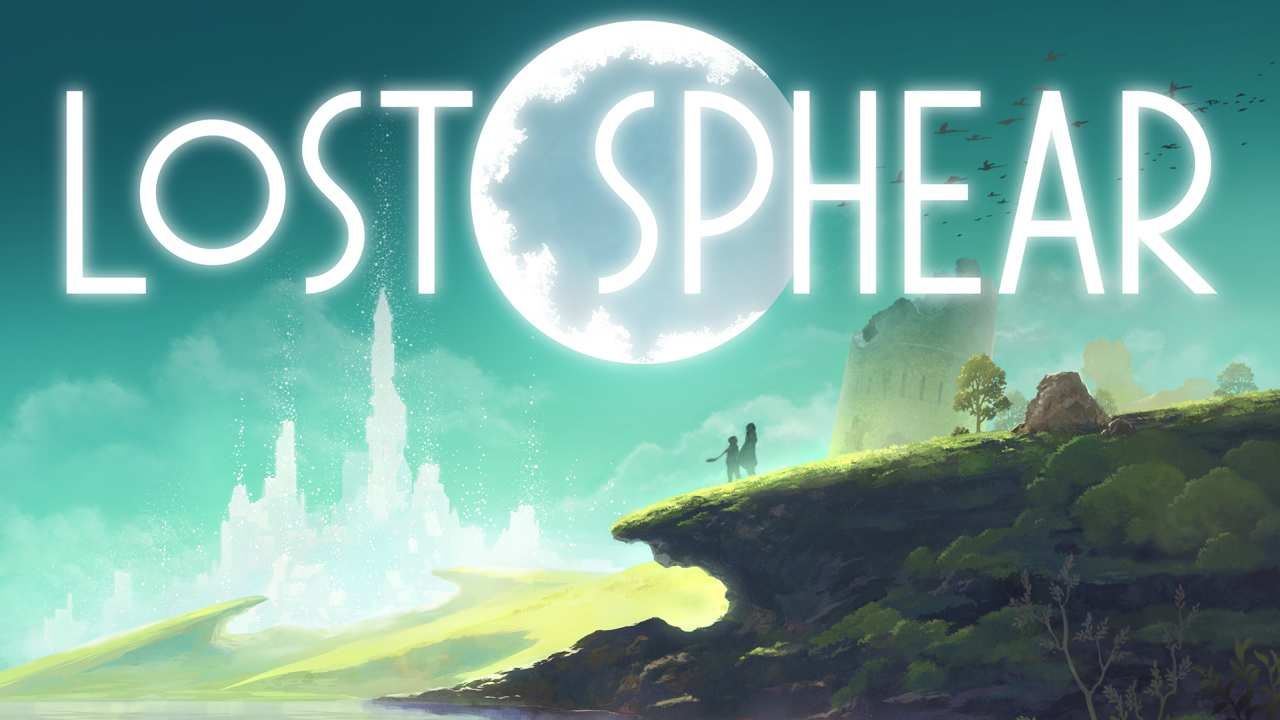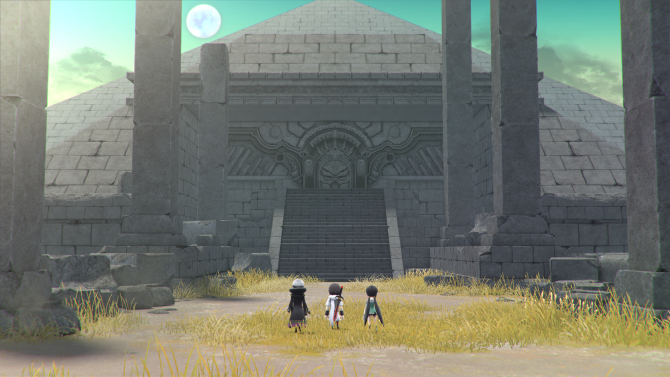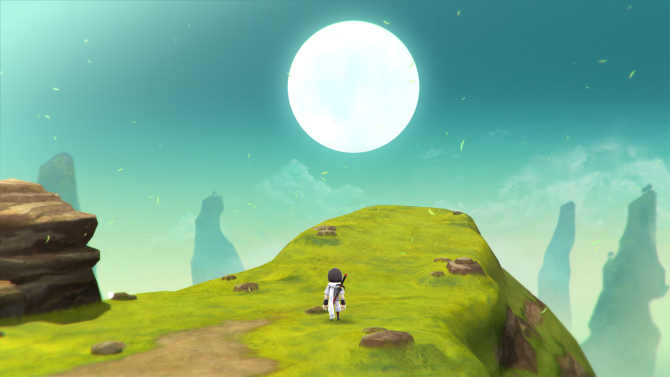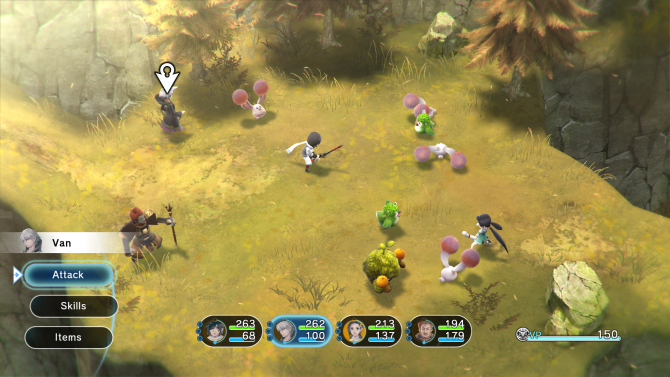In 2016, Square Enix and Tokyo RPG Factory released I Am Setusna — a love letter to the Japanese role-playing games of the 8 and 16-bit eras. Influenced by some of Squaresoft's most notable titles like Chrono Trigger and Final Fantasy VI, the then-new developer brought a substantial, nostalgic journey with its inaugural release.
Fast forward just a year and a half later, Tokyo RPG Factory's sophomore title and spiritual successor to I Am Setsuna, Lost Sphear, arrives delivering another exceptional (and sometimes melancholic) experience presenting a fantastical and intriguing tale paired with the improved mechanics of its predecessor.
Lost Sphear begins introducing a trio of kids —Kanata, Lumina, and Locke from the small town of Elgarthe as they run a few errands for the Elder that is taking care of them. When they come back, they find their town and its residents are draped in a gleaming glow of white. Without spoiling anything, Kanata discovers he can materialize memories and use them to bring back the "lost." With the noticeable rise of this phenomenon, the trio decides it is their duty to find and bring any object back from being lost. As you follow Kanata and company, you'll meet new friends, enemies, and uncover the mystery behind the lost phenomenon.
While Lost Sphear's story is filled with cliches, it handles its triteness well with some solid writing. Sure, it gets corny and predictable at times, but there are some compelling and emotional scenes that kept me interested every step I took. It is apparent that a substantial amount of thought was put into the writing with its proper use of foreshadowing and plethora of themes.
These moments of triumph and defeat are amplified due to the game's music. From the orchestral sounds of the overworld to the somber tones during flashback sequences, the score does a great job supporting the emotions being portrayed on-screen. Without it, the feelings displayed would not be as compelling as they are.
Exploring Lost Sphear's world is nothing out of the ordinary. The fantasy setting is not unlike some of Square Enix's previous JRPG titles. What the game excels at is its beautiful art style. While minimal, certain vistas exhibit just how gorgeous Lost Sphear can be.
[pullquote]"While minimal, certain vistas exhibit just how gorgeous Lost Sphear can be."[/pullquote]
The gameplay takes the combat and Spritnite system from I Am Setsuna and attempts to improve on it. Similar to its predecessor, Lost Sphear uses an active time battle system (ATB system) with each party member equipped with a basic attack along with several skills the character can unleash on its enemies.
Unlike I Am Setsuna, you can move each party member during battle. After choosing an attack, a red silhouette will appear in the form of the moves trajectory allowing you to potentially hit multiple enemies with one attack. This new feature adds a fun layer to combat; destroying five enemies in one fell swoop is intensely satisfying and rewarding.
Skills are gained and with Spritnite, an augmentation that gives character's unique abilities. These abilities can range from null-type physical attacks to an elemental area of effect arrow barrage and can be used every other turn. For example, if you use the move Aura with Kanata, that skill cannot be used on the next turn; it can be used in the following turn.
After a certain period, one of three dots will glow blue on the character's life bar indicating they can go into "momentum mode." Using this ability will grant the attacking party member with more damage. While nothing is needed to use momentum for basic attacks, Momentum Spritnite is required to use it during skilled moves giving buffs to your party members or debuffs to your foes.
To activate a character's momentum, right after you select and position an attack, a blue ring will surround and close in on the character; at this point, you'll have to press the square button and watch those damage numbers fly. The window given to activate momentum is rather large and forgiving. Initially, I would attempt to press the button right when I saw the blue flashing ring where I rarely missed. However, I found you can just mash square right after selecting and positioning an attack.
Each character is equipped with a mechanical suit known as a Vulcosuit. Using the mech armor will give you more defense and attack power, as well as an additional ability known as a Paradigm Drive. The special moves vary between the party members but typically yields an incredibly overpowered attack or support ability. Vulcosuits also be used outside of battle to traverse the environment faster with increased movement speed (using boost) and open new pathways by destroying the world's obstacles. All of these require VP (vulcosuit points) that are shared amongst your entire party. When the suit is first introduced, using it was out of the question; a few moves would deplete all of your VP with no consumables available to replenish it. It was not until later when VP restoration items became more prevalent and the VP gauge increased.
Initially, as each mechanic of the combat system was being presented, I enjoyed it. It felt like a solid modern interpretation of games that inspired it. However, after hours of it, the combat became stale. Changes in strategy were hardly needed; for the majority of my time with the game, I rolled with the same members. It was only during certain boss fights I would maybe decide to start with vulcosuits on, but even then, my strategy hardly deviated.
When I did change up that strategy, it was due to outlandish difficulty spikes. To preface, Lost Sphear is an easy game. There are some minor challenges that will slightly delay your progress, but none of them could be described as harsh or difficult. In some ways, its a great gateway game for players unfamiliar with JRPGs. However, there are moments where even the most common of mobs will utterly destroy you.
There was a boss fight where the boss summons four additional enemies. When combat began, the boss instantly attacked killing two of my party members, followed by some hard hits from the adds, ending with another attack from the boss killing every member of my team before I could even get an attack in. It's not that it was hard — considering I defeated the boss with ease my next attempt — I didn't have a chance to attack. Instances like this do occur sparingly, but enough to deter from the experience.
[pullquote]"Since finishing Lost Sphear, I can't stop thinking about it."[/pullquote]
As you explore the world map, you'll come across lost mountains, valleys, and forests that can be brought back by summoning artifacts. In turn, you will receive passive buffs that will help you in and out of combat. This includes abilities like increased movement speed on the world map or increased attack damage when standing near an ally. Like the game's combat system, I initially loved this idea. I thought it was a clever way to tie aspects of the story with the mechanics of the game and a good way for me to experiment with the combat system. Unfortunately, that was not the case. After summoning an artifact and quickly finding some mobs to test the new buffs I acquired, it hardly felt like it made a difference. There were moments when the increased buffs from the artifacts did help out but were by no means the end all and the be all.
Since finishing Lost Sphear, I can't stop thinking about it. The game does not break the mold by any means — in fact, it attempts to fit the mold of the 90s JRPG — but it does excel in certain facets. While aspects of its gameplay do falter, I never felt discouraged from pressing forward and uncovering the mystery behind the lost phenomenon. Lost Sphear is a beautiful game that even the newest JRPG player can enjoy.




